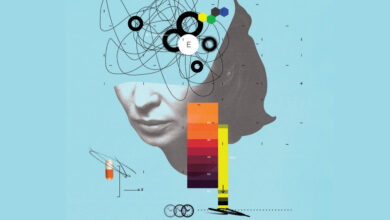The Role of Early Diagnosis in Effective Lazy Eye Treatment


Lazy eye, medically known as amblyopia, is a condition that affects the vision development of children when one eye doesn’t receive adequate use and stimulation. Early diagnosis plays a crucial role in ensuring effective treatment and preventing long-term vision problems. In this blog post, we will explore the significance of early diagnosis in lazy eye treatment, how it impacts lazy eye treatment outcomes, and why timely intervention is key to preserving and enhancing visual health.
Understanding Lazy Eye (Amblyopia)
Lazy eye occurs when the brain favors one eye over the other, leading to reduced vision in the weaker eye. This typically happens because the weaker eye may not receive clear images due to factors such as:
- Strabismus (Eye Misalignment): When one eye turns inward, outward, upward, or downward.
- Refractive Errors: Significant differences in vision between the eyes, such as nearsightedness, farsightedness, or astigmatism.
- Deprivation: Conditions like cataracts or a drooping eyelid that obstruct vision in one eye during early childhood.
The brain learns to ignore signals from the weaker eye, causing it to become progressively weaker over time if left untreated.
Importance of Early Diagnosis
Early diagnosis of lazy eye is critical for several reasons:
- Optimal Visual Development: Visual development is most active during early childhood, particularly before the age of 7 or 8. This period, known as the critical period for visual development, is when the brain is most adaptable (neuroplasticity). Early intervention during this critical period allows for more effective treatment outcomes because the brain is more receptive to relearning and integrating visual information from both eyes.
- Prevention of Permanent Vision Loss: Without early intervention, lazy eye can lead to permanent vision impairment in the affected eye. The brain’s suppression of signals from the weaker eye can result in amblyopia, where the eye does not achieve normal visual acuity even with corrective lenses. Early diagnosis and treatment can prevent or mitigate these long-term vision problems.
- Improved Treatment Response: The success of lazy eye treatment, such as patching therapy or vision exercises, depends significantly on how early treatment begins. Studies have shown that children who start treatment before the age of 5 or 6 tend to have better outcomes compared to those who begin treatment later. Early diagnosis allows for prompt initiation of appropriate treatment measures, increasing the likelihood of achieving normal or near-normal vision in the affected eye.
- Reduced Need for Intensive Therapy: Early intervention may reduce the duration and intensity of treatment required. Children who receive timely treatment may require less aggressive interventions, such as fewer hours of eye patching or vision therapy sessions, to achieve optimal visual acuity.
How Lazy Eye Is Diagnosed
Lazy eye is typically diagnosed during routine eye examinations, especially in children. Eye care professionals, including optometrists and ophthalmologists, conduct comprehensive evaluations to assess visual acuity, eye alignment, and overall eye health. Common diagnostic tests include:
- Visual Acuity Testing: Using charts (like the Snellen chart) to measure how well each eye can see.
- Refraction: Determining if corrective lenses are needed to improve vision.
- Eye Alignment Evaluation: Checking for any misalignment of the eyes (strabismus).
- Assessment of Binocular Vision: Testing how well the eyes work together to perceive depth and coordinate visual tasks.
In some cases, additional tests such as cycloplegic refraction (using eye drops to temporarily paralyze the focusing muscles of the eyes) or tests to evaluate the brain’s response to visual stimuli may be performed to further assess the extent of lazy eye and its underlying causes.
Treatment Options for Lazy Eye
The goal of lazy eye treatment is to strengthen the weaker eye and improve its visual acuity. Treatment options vary depending on factors such as the cause of lazy eye, the severity of the condition, and the age of the individual. Common treatment approaches include:
- Prescription Eyeglasses or Contact Lenses: Correcting refractive errors to improve vision in the weaker eye.
- Eye Patching: Covering the stronger eye with a patch to encourage the brain to use and strengthen the weaker eye. Patching is often combined with activities that promote the use of the weaker eye, such as reading or playing games.
- Atropine Eye Drops: Using atropine drops to blur vision in the stronger eye, forcing the brain to rely on the weaker eye.
- Vision Therapy: Exercises and activities designed to improve eye coordination, focusing abilities, and depth perception.
- Surgery: In cases of severe strabismus or other structural issues, surgical intervention may be necessary to correct eye alignment.
The specific treatment plan is tailored to each individual based on their unique needs and the recommendations of their eye care provider.
Challenges of Late Diagnosis and Treatment
Delayed diagnosis and treatment of lazy eye can pose significant challenges:
- Reduced Treatment Effectiveness: As the critical period for visual development passes, the brain becomes less adaptable, making it more difficult to achieve optimal vision in the affected eye.
- Persistence of Vision Problems: Children who start treatment later may experience persistent vision issues, such as reduced visual acuity or poor depth perception, even with intensive therapy.
- Impact on Quality of Life: Untreated or inadequately treated lazy eye can affect a child’s academic performance, social interactions, and overall quality of life due to vision limitations.
Parental Role in Early Detection and Treatment
Parents play a crucial role in the early detection and treatment of lazy eye:
- Regular Eye Exams: Schedule routine eye exams for your child starting at an early age, as recommended by their pediatrician or eye care professional.
- Awareness of Signs and Symptoms: Be aware of signs of lazy eye, such as eye misalignment, squinting, or covering one eye.
- Prompt Action: If you notice any potential signs of lazy eye or vision problems in your child, seek evaluation by an eye care professional promptly.
- Compliance with Treatment: Ensure that your child adheres to their prescribed treatment plan, whether it involves wearing glasses, using eye drops, or participating in vision therapy exercises.
Conclusion
Early diagnosis is paramount in ensuring effective treatment and positive outcomes for lazy eye. Timely intervention allows for the best chance of restoring normal or near-normal vision in the affected eye, preventing long-term vision problems, and supporting healthy visual development. If you suspect that your child may have lazy eye or if there are concerns about their vision, don’t hesitate to consult with an eye care professional for evaluation and personalized treatment recommendations. By addressing lazy eye early, you can help maximize your child’s visual potential and ensure a bright future with clear vision.
3.5










